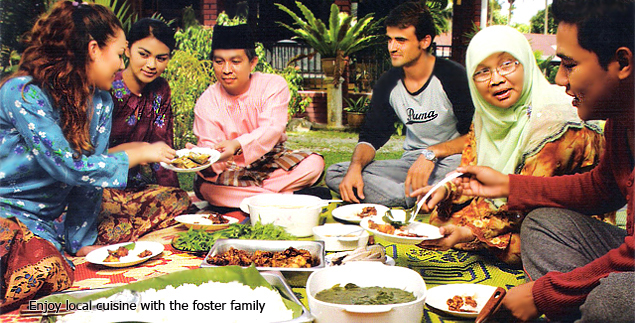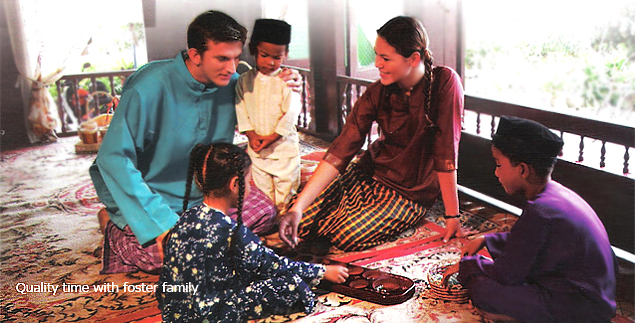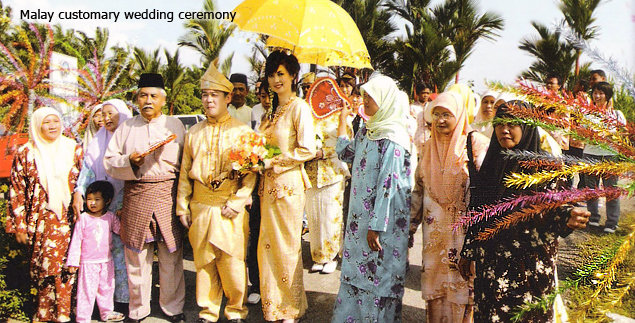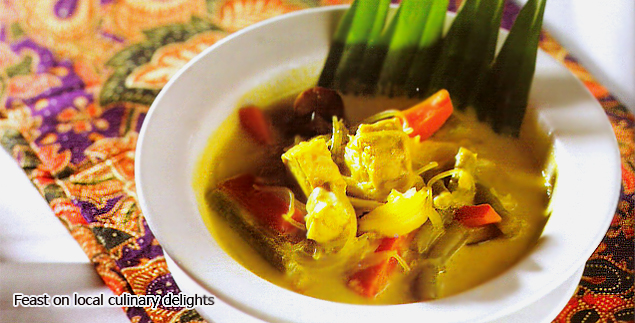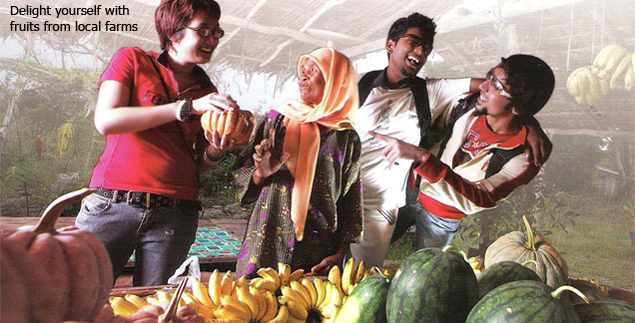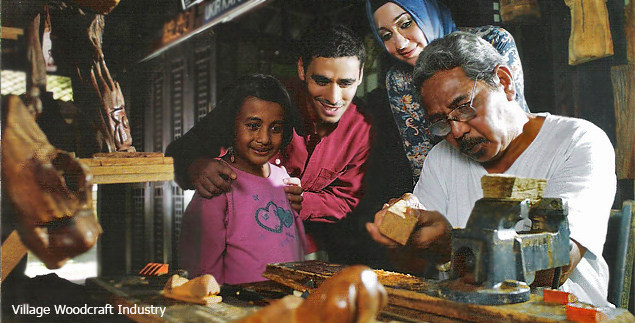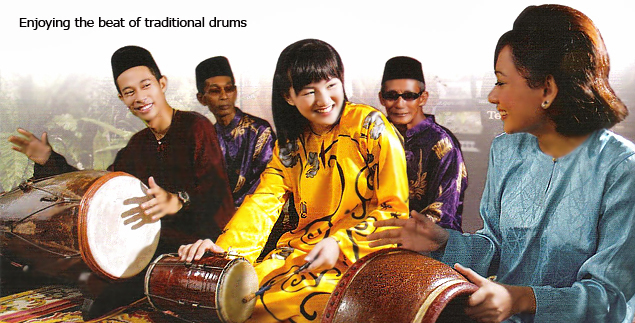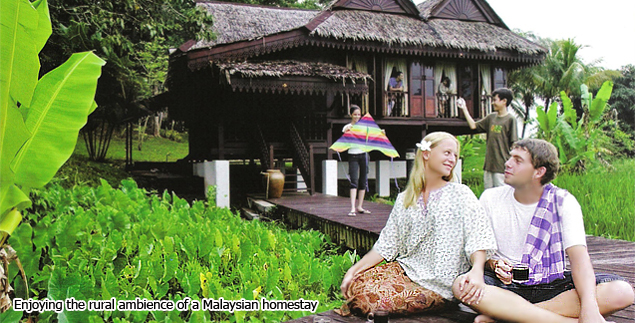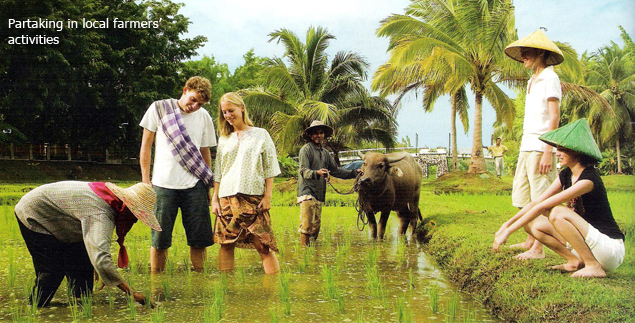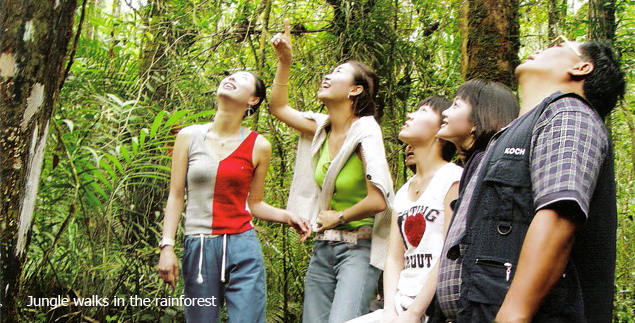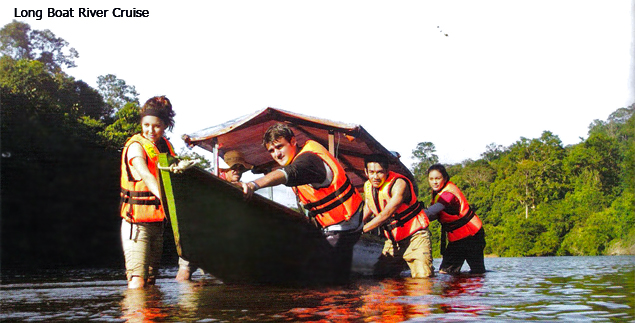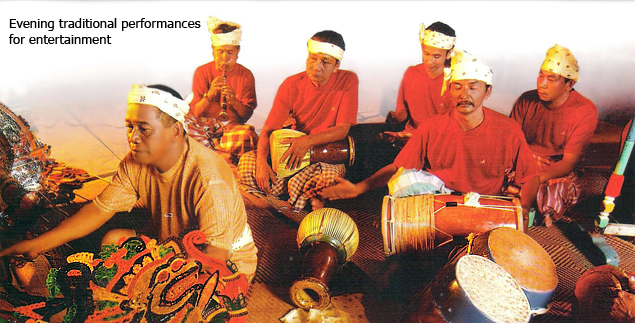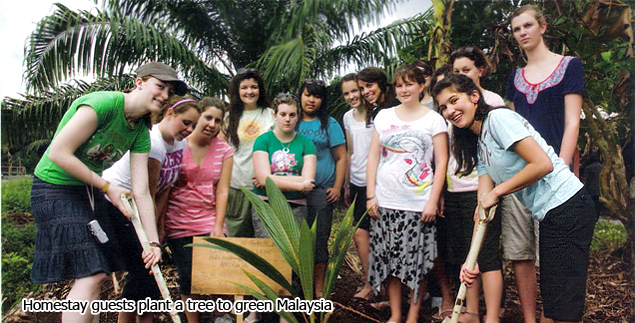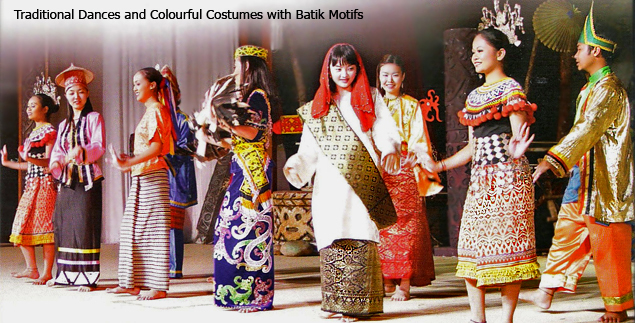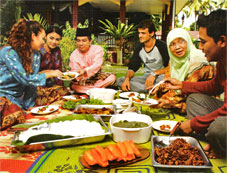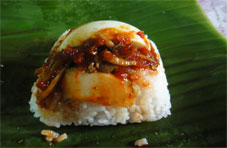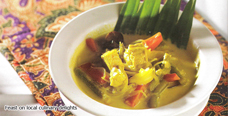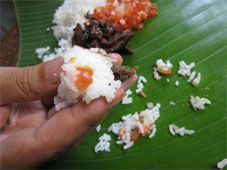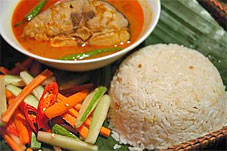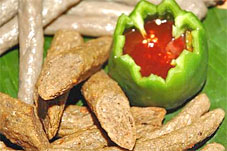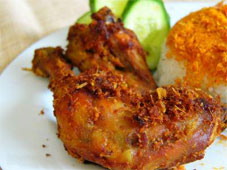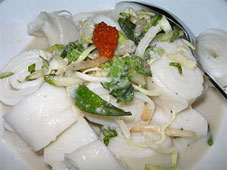Culture & Traditions ...
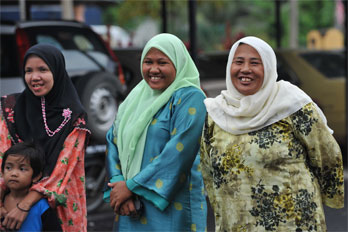
Enjoy a fascinating spectrum of cultures and traditions in a Malay village. Watch cultural performances or be immersed in the enchanting melody of traditional musical instruments. A not-to-be-missed highlight is the mock-wedding, held to showcase the colourful and interesting local customs. The convivial atmosphere will set the stage for lots of excitement!
Malaysia is a mosaic of three major races; the Malay, Chinese and Indian. In addition, the country is home to many ethnic communities.
Malays form more than half of the population. They profess Islam as their religion and speak Bahasa Malaysia, the national language. A large number of homestay villages in Peninsular Malaysia are operated by the Malays. Known for their gentle mannerisms and cultural refinement, many rural Malay folk engage in artistic endeavours. In Peninsular Malaysia, the homestay programme covers more than 300 registered rural villages located in every state and predominantly in homes of the Malay community.
The states of Sabah and Sarawak are home to a diversity of ethnic groups. From resplendently dressed Bajau horsemen to the legendary Iban warriors, Sabah and Sarawak offer a gamut of exotic cultures and vibrant traditions.
Traditional Homes
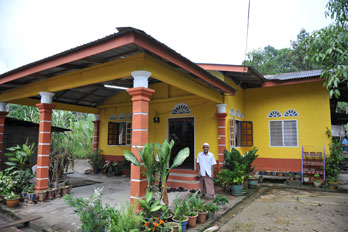
The type of house that visitors will live in during the homestay programme is most likely a traditional Malay house, which is made of timber and raised in stilts. Some houses display intricate carvings or crafts. The windows open out to the lush greenery that surrounds the homes, offering plenty of fresh air and a sense of calm. In Sabah and Sarawak, visitors will be able to live in a Malay village or traditional dwellings such as a longhouse (a communal home). In Sarawak visitors can experience life in a Melanau tail house, which can reach up to 40 feet above ground level.
Festivals
The largest celebration for the Muslim community is Eid ul Fitr, or locally known as Hari Raya Aidilfitri. It marks the end of the fasting month, Ramadan, and the beginning of Syawal. Another major festival is the Hari Raya Aidiladha, which marks the completion of the Hajj pilgrimage in Makkah.
The Kandazandusun and Murut communities in Sabah celebrate Tadau Kaamatan or Harvest Festival in May. In Sarawak, Gawai Dayak (celebrated in June) is a centuries-old celebration that marks the end of the paddy planting season and the start of a new season.
Mock Weddings
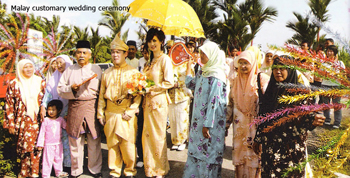
One of the best ways to understand traditional Malay culture is to participate in a Malay wedding, which is fascinating and steeped in age-old traditions. A Malay wedding begins with an 'akad nikah' ceremony. The groom signs the marriage contract and agrees to provide the bride with a 'mas kahwin' or dowry. On the day of the wedding, the groom arrives with his entourage of relatives and friends. He is accompanied by musicians beating the 'kompang' ( a percussion instrument) and followers carrying the 'bunga manggar' or palm blossoms. As they arrive at the bride’s home, the entourage will be greeted with the sprinkling of yellow rice and scented water.
The highlight of a Malay wedding is usually the 'bersanding' ceremony, where the bridal couple will be seated on a dais while family members, friends and well-wishers come forward to sprinkle the couple with yellow rice and scented water as a sign of blessing. Departing guests will receive a token of appreciation, usually in the form of a decorated egg called 'bunga telur'.
Filled with interesting rituals, the Malay wedding ceremony will make for an eventful day. In most villages, a mock-wedding is arranged to give guests a chance to experience this merry occasion.
Rural folk are proud custodians of culture and the fine arts. In most homestay villages, visitors will be able to watch the pencak silat, a fascinating Malay martial art which are performed on official occasions or even weddings. Silat features elaborate movements precision timing and highly-skilled manoeuvres.
The traditional shadow play theatre or wayang kulit is another interesting performance. This show is performed by casting animated puppet shadows on a white cloth screen.
The puppet characters and stories are usually adapted from ancient epics. The master storyteller, called Tok Dalang, conducts the whole show from behind the screen as he recites the tale with appropriate sounds and movements. Both silat and wayang kulit are accompanied by traditional music.
Malaysia�s wide range of traditional dances and musical shows create the perfect cultural backdrop for a homestay visit. There are many types of dances in Malaysia. The most upbeat and popular form of traditional dance is the tarian joget. Performed during joyous occasions such as weddings, the joget involves pairs of men and women performing swift and graceful movements.
Joget is usually accompanied by an orchestra which includes instruments such as the violin, rebana and gong. The basic steps are relatively easy to learn. With a little practice, visitors will soon find themselves swaying to the music!
Visitors to almost any homestay village in Malaysia will be able to hear the thunderous echo of the kompang. One of the most widely used percussion instruments in Malaysia, the kompang is a hand-beaten frame, made of wood as well as cow or buffalo hide. It is indispensable during religious occasions, festivals and weddings. One can play the kompang while being seated, standing or walking in a procession. The gusto of the musicians and the reverberating sound make it a lively performance to watch.
Some states are known for their signature performances. In Kelantan, the Malay cultural heartland, visitors can enjoy a vibrant performance which features the rebana ubi. This huge, brightly decorated drum is made from hollow logs and covered with buffalo hide. A visit to the Renok Baru Homestay in Kelantan offers an opportunity to enjoy this performance. Lively dances such as tarian sabak, tarian piring and tumbuk emping are among the attractions at Pasir Raja Homestay in Terengganu. Visitors to the Mengkuang Titi Homestay in Penang can enjoy boria, a musical performance that is unique to Penang.
Negeri Sembilan�s trademark musical instrument, called cak lempong can be seen at Homestay Lonek. Zapin dances and kuda kepang performances ( a dance featuring two-dimensional mock horses made of rattan) are among the highlights of a visit to Felda Semenchu Homestay in Kota Tinggi Johor.
The graceful Sumazau dance of Sabah, as well as the datun julud, tarian lesung and ngajat dances of Sarawak are equally interesting.
Visitors should not miss a chance to watch mogunatip, the traditional bamboo dance of Sabah. This dance requires artists to skilfully perform their steps while their team-mates move bamboo poles back and forth between their feet.
As the beat accelerates, the dance seems to get increasingly difficult, but the agility of the dancers makes it possible for them to move without getting their feet trapped.
Visitors to Sabah can keep an eye out for the sompoton, a mouth organ made from dried gourd and bamboo pipes. Sape (a traditional guitar) is a very important musical instrument in Sarawakian traditional music. This musical instrument renders the beat for the datun julud dance and is often accompanied by singing and clapping of hands.
Homestay villages offer a variety of activities to give an insight into the colourful Malaysian culture. Enjoy the cultural performances and take home wonderful memories

